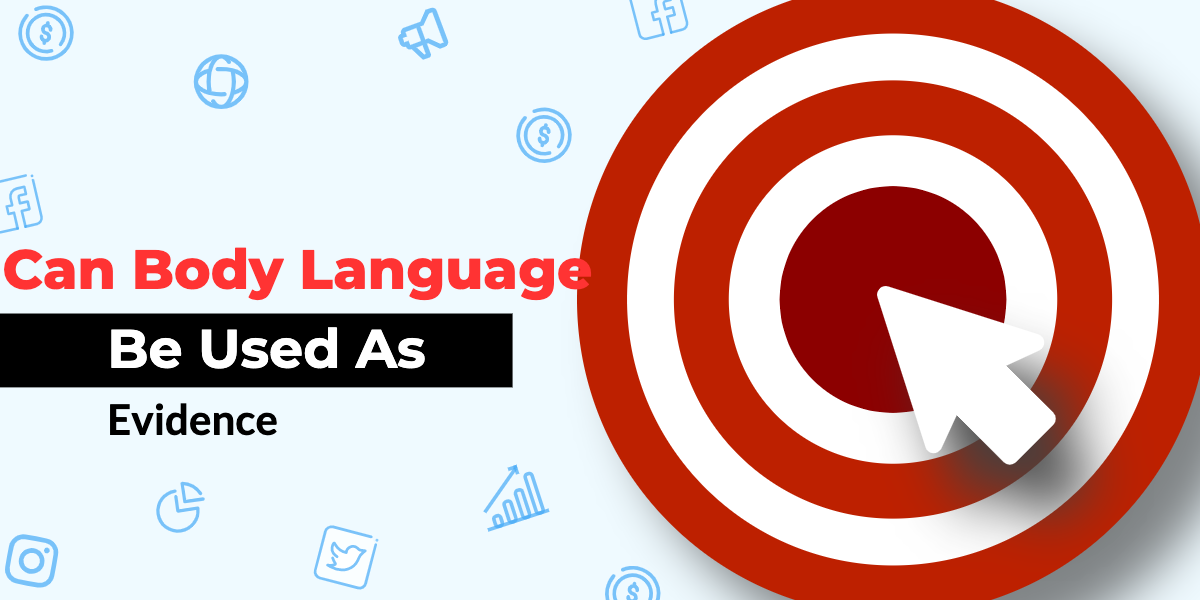The use of body language as evidence has been a topic of debate for years. But with the advancement of technology, it is now possible to measure people’s reactions and emotions through their body language.
Body language is a form of non-verbal communication that can be used as evidence in court. The most common use of body language in the courtroom is to determine if a person is telling the truth or lying.
Body language can also be used to help identify an individual. This identification can be made by either matching up a person’s body language with their behavior or with the body language of another individual.
Body language can provide valuable information in many legal situations. For example, a victim’s body language in a police interview can provide investigators with important details about the crime. In addition, body language is often used as evidence in courtroom trials.
For instance, a defendant’s body language during testimony can help the jury determine whether or not he or she is telling the truth. In short, body language can be a powerful form of evidence in both criminal and civil legal proceedings.
First, we need to understand what body language is and how to read it.
What is Body Language?
Body language is a form of nonverbal communication in which physical behaviors, such as gestures, posture, and facial expressions, are used to convey messages. These messages can be positive, negative, or neutral, and can be conveyed consciously or unconsciously. The next step to understanding body langauge is the context you find the person in.
What Is Context in Body Language Terms?
Understanding the environment from a contextual point of view is important because there will be certain social pressures that are connected to the environment that will give us clues to what that person is really thinking.
When a person is in court, they will be displaying high levels of stress. They may stumble over their words, have a dry mouth, move from side to side, and look worried. All of this needs to be taken into account when reading body language.
How to Read Body Language in Court.
How we dress, and how we walk have meaning; we can use that to interpret what is on the mind of the person. The first thing you must do is get a baseline of that person in their current state. To get a baseline, check out this article. Once you understand their baseline, you can then go on and make an assessment of how they are behaving by observing their body language.
The first thing you should look at is the hair: Does it look well-groomed and healthy?
The forehead is the second place to look this is a great indicator of how a person carries themselves every day and the lines on the face tell stories about the feelings we use the most.
The next place to look is the eyes, are they red do they have bags under their eyes do they look tired like they haven’t had enough sleep. Staying with an eye-level look at the space between the eyes called the glabella is one of the first places we receive information.
The next place to keep an eye on is the blink rate. When a person is asked a stressful question, does the blink rate go up? A high blink rate is an indication of stress.
The noise is also important if someone doesn’t like something, they will raise their noise like it’s a bad smell.
The way a person’s lip is positioned can reveal how they are really feeling. An individual who is holding back an opinion or information might press their lips together. This position indicates that something is being withheld or the person has withheld an opinion/information in the past.
There are many more non-verbs when it comes to access. We have to think about what this person is transmitting in that moment. The most important thing to remember is we have to read in clusters of information.
Some common examples of body language are eye contact, facial expressions, personal space, touching, and paralanguage.
Questions And Answers.
How Can Body Language Be Used as Evidence in a Court of Law?
There are a few different ways that body language can be used as evidence in a court of law. One way is through the use of video footage that shows the body language of the person in question. Another way is through the testimony of witnesses who saw the body language of the person in question. And finally, experts can also be called in to testify about the significance of certain body language cues.
What Are Some Benefits of Using Body Language as Evidence?
There are several benefits to using body language as evidence.
First, it can be used to support other forms of evidence, such as verbal testimony or written statements.
Second, it can help to establish the credibility of a witness or victim.
Third, it can be used to corroborate or refute testimony. Finally, it can help to shed light on the mental state of a person at the time of an event.
Are There Any Limitations to Using Body Language as Evidence?
Yes, there are limitations to using body language as evidence. One limitation is that body language can be interpreted in different ways, so it is not always reliable. Another limitation is that people can fake body language, so it is not always an accurate representation of how a person is feeling.
Summary
Body language can be used as evidence in a court of law in a few different ways, such as video footage or witnesses’ testimony. There are benefits to using body language as evidence, like supporting other forms of evidence or helping to establish credibility. However, there are also limitations to using body language as evidence, such as the interpretation of body language cues.

